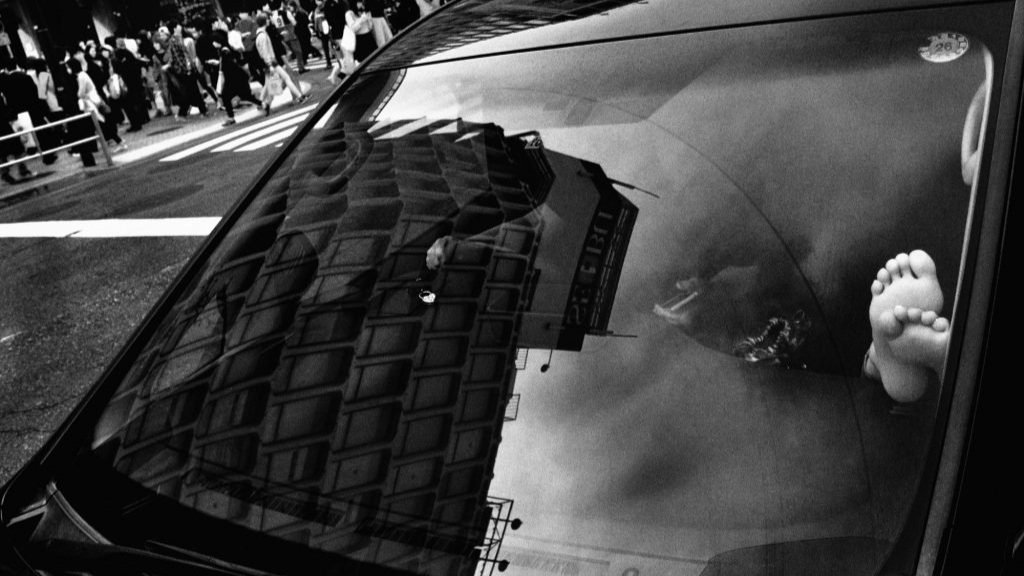Secrets to Capturing History Through Photography - Wendel A. White’s Manifest | Thirteen Colonies
Welcome to this edition of [book spotlight]. Today, we uncover the layers of 'Manifest | Thirteen Colonies,' by Wendel A. White (published by Radius Books and co-published by the Peabody Museum at Harvard). We'd love to read your comments below about these insights and ideas behind the artist's work.
Step into a hidden world where history and art collide. In Manifest | Thirteen Colonies, Wendel A. White takes you on an evocative journey through the archives of America’s earliest settlements, unveiling the powerful, untold stories of African American resilience and heritage.
Origins of the Project: What inspired you to embark on the photographic journey of “Manifest | Thirteen Colonies,” and how did you decide on the theme of exploring African American material culture in the repositories of the original thirteen colonies?
The origins of my interest in using archives for my work began while I was working with archival materials and artifacts in the “Small Towns, Black Lives” project (1989-2002). The project was an exhibition and published as a book by the Noyes Museum of Art in 2003. Although that project was predominately portraiture, it also included landscape, architecture, archival materials, and text as a means of describing the histories of the African American settlements in southern New Jersey.
The work in the first Manifest portfolio began in 2008 while I was a visiting faculty at Rochester Institute of Technology. At the time I was planning a landscape project while I was in the area. Research led me to the special collections at the Rush Rhees Library of the University of Rochester. In the library I encountered a lock of Frederick Douglass’ hair and the first book he purchased after becoming free of slavery. That experience caused me to turn my attention toward the material remains of Black life held in archives and public collections.
Manifest: Thirteen Colonies is the most recent iteration of the Manifest series. I was thinking about the upcoming 250th anniversary of the Declaration of Independence and its importance in the history of race and slavery in the US. Language that document which expressed a condemnation of slavery was removed after the first draft of the Declaration. This is an important moment to consider the role of archival collections in defining the history of the original thirteen English colonies (and Washington, DC).
Artifact Selection: Your project involves a diverse range of artifacts from various libraries, museums, and archives. What criteria do you use to select these artifacts, and how do they contribute to the narrative you aim to create through your photography?
Each of the encounters with the materials in various collections is unique. I have tried to remain “open” to the experience that each institution has to offer. In some locations there are very formal collections that address specific historic concerns while others are more random accumulations of materials based on donations rather than a mission to collect a specific history.
It was always difficult to know from the finding aids or the searchable database whether the object would resonate for my concerns. Each venture to a collection was made with the knowledge that there were materials in the collection to photograph, but I was not certain that they would be suitable for the project until I saw them. Even then, I could be surprised (good and bad) by the translation into the photograph. The result is a body of work that reflects the complex, non-linear threads of race and its definition in American society. The narrative, if it exists is going in many directions all at once.
Photographic Approach: How do you approach photographing such significant and often delicate artifacts? Can you describe the techniques and considerations that are crucial in preserving the integrity and story of these objects through your lens?
It is important to understand that I am recording my experience as I see the materials. I am not trying to create a descriptive catalog of the objects in the way that would be useful for a library database (always clear and highly detailed, descriptive photographs). The result is that my photographs are often (not always) narrowly focused on a particular detail of the objects and in many cases the most descriptive aspect of the content is obscured (a metaphor for public attention to Black history).
The photographs are all made using the available light in the archives (often library reading rooms). This was a helpful aspect of my practice which made it much easier for the collections to allow me to work with very fragile materials. I am working with a tripod which was occasionally the only aspect of my requests that needed special permission (many collections that allow photography do not allow tripods). Nearly every collection allowed me to handle the materials directly (as they would any researcher) but there were a few collections where the staff needed to handle the objects.
The project started with photographs made using a 4x5 view camera and sheet film. After the film I used was no longer manufactured (Quickload) I used an adapter to attach a digital back to the view camera. It was the control of the perspective and plane of focus that was most important.
Historical Impact: Many of the artifacts you photograph serve as forensic evidence of Black life and history in the United States. How do these artifacts reflect the broader history of African American experiences, and what stories do you hope to highlight through them?
These narratives are complex and reflect ideas and attitudes about race as a means of defining African forced labor (more useful that white indentured servitude since race provided a readily visible marker of caste) then later other imposed social and economic restrictions. I have sought out the stories of white efforts to promote abolition and end slavery as well as the efforts to impose oppression and violence against the Black community. The photographs describe the painful and celebratory aspects of Black life as well as aspects of African American resistance and agency.
The materials provide evidence of Black accomplishments early in the history of the African presence in North America and well before the representations in mass media. There are also images of objects from the contemporary moment that still describe the effects of racialized definitions of individuals (door from Katrina [pg. 219] and a ceremonial casket [pg. 215] from the protests over the killing of Michael Brown in Ferguson, MO).
Personal Connection: As someone with a deep involvement in the arts and a profound understanding of African American history, how has this project influenced your perspective on the historical and contemporary experiences of Black Americans?
As a teenager I began making portraits and photographing family reunions. By the late 1980’s I was working on the Small Towns, Black Lives project. Since then, there have been other projects related to Black life including Schools for the Colored, Village of Peace, 7 Steps to Freedom, Red Summer, and various iterations of the Manifest portfolios. Together this work is all part of a journey and journal of African American experience that should not be thought of separate efforts but rather as one ongoing consideration of the community.
I think of the film with Warren Beatty, The Parallax View, (appropriately a photographic term as well) and the idea that what I see is determined by my position (physical and cultural). A person standing a few feet on either side will see the same subject differently. I am reluctant (and doubt the usefulness) to express a sweeping generalization about Black life other than making it clear that my perspective is based on where I stand and the choices I make. In my artist statement for the book, I indicated that if I were to start this project again there would likely be different choices, not because I regret this selection, but I would be different (my thinking about the work is always evolving) and that would change the outcome.
Challenges and Discoveries: What were some of the most challenging aspects of creating “Manifest | Thirteen Colonies,” and were there any particular artifacts or stories that surprised or deeply moved you during your research and photography process?
This project (and most of my projects) are deeply connected to aspects of surprise and discovery. I think of the work as the visual and creative response to my research efforts and direct conversations with scholars and communities. I have often made plans to visit a collection, knowing that they have some materials that are related to my project, but on many occasions, I find other materials that I did not know existed and those moments are remarkable. I should add that the surprises are also visual as I work with the conditions where I am not in control of the lighting. I must find ways to respond to the unexpected ways that objects are rendered in each setting. One example is a daguerreotype of an African boy in the Peabody collection (pg21). Placing the daguerreotype on the table, I noticed that the light fixture above, reflected through the middle of the image revealing the “negative” aspect of the daguerreotype. The resulting image is both commentary and a response to the material itself.
The Calvert plantation registry of enslaved workers (pg. 169-171) is a poignant example of a material I found but was not fully prepare for its impact. I have photographed many objects and documents that reflect our nation’s history of slavery. However, the methodical, ledger of human lives and the stated values of those individuals (330) held more impact than most. The result was that after photographing the ledger in the manner that was common to the work in the portfolio, I returned to the collection and photographed each page in a straight, flat view. In the publication, we reproduced all the pages from the book.
Educational Role: Your work is included in many prestigious collections and has been recognized for its educational value. How do you envision “Manifest | Thirteen Colonies” being used in educational settings to teach about African American history and culture?
I hope that the consciousness raised by the exhibition and the publication will contribute to the complex and complicated narrative of race in the history of our country. One reviewer articulated the outcome “The body of work collapses time and space across each piece of stimuli that White photographed by drawing attention to the infinite connections between and expansions beyond them.” (Alisa V. Prince)
The usefulness of the publication (given the longer presence and wider reach) will be to encourage individuals and archives to think about these materials in new ways and make new collaborations with other artists. Thirty-five years ago, I headed to the National Archive to revive the story based on a small graveyard with a few headstones marked as veterans of the United States Colored Troops during the Civil War (Small Towns, Black Lives). Archives still are places for creative engagement in my work. One of the significant educational aspects of the Manifest: Thirteen Colonies book is the contribution by all the remarkable scholars that have graciously contributed essays. The essayists include Ilisa Barbash, Cheryl Finley, Leigh Raiford, Brenda Dione Tindal, and Deborah Willis, I am deeply grateful to them all for the additions.
Future Directions: Given the significance and success of this project, what are your future plans? Are there other themes or historical periods you are interested in exploring through your photography?
The Manifest portfolios continue to be an area of interest in my work, I hope to seek out new collections in other geographic regions of the country. Additionally, I do have other project ideas, but they are still in very early stages and I am not certain that they will materialize in ways that I envision or as has often happened in the past, veer off in new directions (Manifest began with the intention of creating a landscape project).
To discover more about this intriguing body of work and how you can acquire your own copy, you can find and purchase the book here. (Radius Books, Amazon)
Key Takeaways from Wendel A. White’s work
Embrace the Power of Storytelling: White’s project emphasizes the importance of narrative in photography. Seek out stories that are meaningful and have historical or cultural significance to create work that resonates deeply with audiences.
Research and Preparation are Crucial: Before shooting, White extensively researched the artifacts and their historical contexts.
Adapt to Your Environment: White often worked with available light and adjusted his techniques based on the conditions of the archives and libraries.
Focus on Details to Convey Larger Narratives: White’s photographs often zero in on specific details of artifacts, highlighting their significance and sparking curiosity.
Collaborate and Seek Insights from Others: White’s project includes contributions from various scholars, adding depth to the work.
Wendel A. White
Wendel A. White was born in Newark, New Jersey and grew up in New York, Pennsylvania, and New Jersey. He was awarded a BFA in photography from the School of Visual Arts in New York and an MFA in photography from the University of Texas at Austin. White is currently Distinguished Professor of Art at Stockton University, NJ.
He has received various awards and fellowships including an honorary Doctor of Arts from Oakland University, MI; the Robert Gardner Fellowship in Photography, Peabody Museum of Archaeology & Ethnology, Harvard University; John Simon Guggenheim Memorial Foundation Fellowship in Photography; three artist fellowships from the New Jersey State Council for the Arts; Bunn Lectureship in Photography and grants from EnFoco, Center Santa Fe, the Graham Foundation for Advanced Studies in the Fine Arts, and various artist’s residencies.
His work is represented in museum, public, and private collections including National Gallery of Art, DC; Mint Museum, NC; Duke University, NC; New Jersey State Museum, NJ; California Institute for Integral Studies, CA; Graham Foundation for the Advancement of the Fine Arts, IL; En Foco, NY; Rochester Institute of Technology, NY; The Museum of Fine Art, Houston, TX; Museum of Contemporary Photography, Chicago, IL; Haverford College, PA; University of Delaware, DE; University of Alabama, AL; and Schomburg Center for Research in Black Culture, NY.
White has served on the boards of directors for the Society for Photographic Education, New Jersey Council for the Humanities, and The Print Center (PA). He has also served on the Kodak Educational Advisory Council, NJ Save Outdoor Sculpture, the Atlantic City Historical Museum, Atlantic City Free Library Foundation, New Jersey Martin Luther King Jr. Commission, and the New Jersey Black Culture and Heritage Foundation.
Recent projects include Manifest: Thirteen Colonies; Red Summer; Schools for the Colored; Village of Peace: An African American Community in Israel; Small Towns, Black Lives; and others. (Website, Instagram)
More photography books?
We'd love to read your comments below, sharing your thoughts and insights on the artist's work. Looking forward to welcoming you back for our next [book spotlight]. See you then!






















